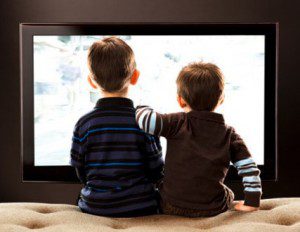Bobo Doll Experiment Definition
 Albert Bandura conducted the Bobo doll experiment in the 1960s to investigate whether children could learn new behaviors through observation. The descriptive name of these studies comes from an inflatable child’s toy, a “Bobo doll,” that had a weighted bottom which allowed it to be repeatedly knocked over and yet bob back up. Children who observed an adult kicking, punching, or otherwise attacking the Bobo doll were more likely to later act in the very same way against the doll than were children who had observed nonviolent play or no play at all. Variations of the original study produced similar findings, even when a live clown was used in place of a doll. Collective findings from the Bobo doll experiment aided Bandura in the development of social learning theory.
Albert Bandura conducted the Bobo doll experiment in the 1960s to investigate whether children could learn new behaviors through observation. The descriptive name of these studies comes from an inflatable child’s toy, a “Bobo doll,” that had a weighted bottom which allowed it to be repeatedly knocked over and yet bob back up. Children who observed an adult kicking, punching, or otherwise attacking the Bobo doll were more likely to later act in the very same way against the doll than were children who had observed nonviolent play or no play at all. Variations of the original study produced similar findings, even when a live clown was used in place of a doll. Collective findings from the Bobo doll experiment aided Bandura in the development of social learning theory.
Bobo Doll Experiment Description
Nursery school children were divided into three similar groups. Children in two of the groups were taken individually by an experimenter into a room where they could play with a variety of toys. The experimenter also escorted an adult into a corner of the same room to play with another set of toys. At this point, the children observed one of two things. Children in one group saw the adult in the corner playing quietly with a set of Tinker toys. However, children in the other group saw the adult begin to play with the Tinker toys, but then begin behaving aggressively toward the Bobo doll. This aggressive play included punching the doll in the nose, picking up a mallet and pounding the doll, and tossing the doll in the air. Although each child was in a position to observe this entire situation, no direct contact existed between the adult and the child.
Academic Writing, Editing, Proofreading, And Problem Solving Services
Get 10% OFF with 24START discount code
After 10 minutes, the experimenter led the child into another room. This phase of the study also included children from a third group who had not observed an adult in either of the previous play conditions. After experiencing a frustrating situation (not being allowed to play with nicer toys), the child was led into yet another room to play while the experimenter completed paperwork nearby. The room contained toys that could be played with violently (such as dart guns), nonviolent toys (such as dolls and toy trucks), and a Bobo doll.
Children who had observed the adult playing with the Bobo doll in an aggressive manner were more likely to act aggressively toward the doll than were children who had watched the adult playing nonaggressively. However, children who had viewed nonaggressive play were more likely to later play peacefully than even those children who had not observed any modeled play. Thus, it was demonstrated that children could learn both good and bad behaviors in the absence of punishment or reward simply by observing others modeling those behaviors.
Reference:
- Bandura, A., Ross, D., & Ross, S. A. (1961). Transmission of aggression through imitation of aggressive models. Journal of Abnormal and Social Psychology, 63, 575-582.